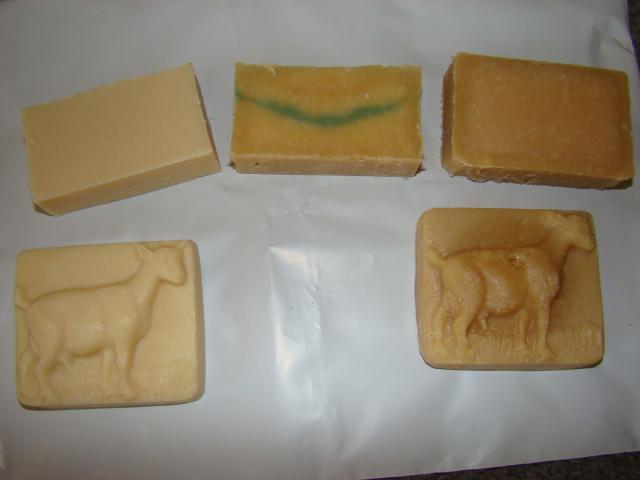WitW,
Although I wear a full face shield, I do not wear any gloves anymore.
I had one too many experiences with a piece of lye getting inside my glove (which was damp from my hands sweating) and getting burned before I could get the glove off and rinse my hand with water. I do remove rings, watches & bracelets and I wear short sleeves or roll my sleeves up so they do not catch any lye or lye dust that could un-expectantly burn me. I keep my hands very, very, very dry as lye & lye dust is attracted to moisture.
Since I make milk soaps exclusively, the lye solution is the last thing I make. My oils are ready to go, my frozen milk is weighed up and chunked into 1" or smaller pieces. I'm able to mix up the lye and milk within a couple of minutes and pour it into the waiting oils, give it a burst of the stick blender. Since my hands are not encumbered by gloves, at the first tingling of lye, I'm able to turn on the faucet and rinse that spot all the while stirring my lye solution or mixing my oils and lye solution.
Someone mentioned heating their liquid oils and then adding the weighed solid oils. Just a suggestion here. Back when I weighed up oils for individual batches, I didn't heat my liquid oils. I weigh out my solid oils and put them on a low heat, then weigh my liquid oils. When I remove the melted solid oils from the heat, I add them into my liquid oils, make up the lye/milk solution and I'm ready to go. Now a days, I use a 'master batch' method where I will weigh up enough oils for 5-6 batches (about 90 lbs of oil) and combine them all & store it. When I go to make soap, I merely have to stir up my master batch, weigh out the total amount of oils needed and away I go! It sure is a time saver.
Post about vinegar & water on lye spills. WATER is ALWAYS the best method to use. Picture this ... baking soda is a weak base (lye is a much stronger base). Grab a cup and put a couple teaspoons of baking soda in it. Now pour vinegar into that cup. What happens?? Yup, you get a chemical reaction that cause the baking soda to foam and froth. Grab another cup and put in a couple teaspoons of baking soda in it. Pour water into that cup. What happens?? Nothing ... no chemical reaction, just a dilution of baking soda.
Lye reacts the same way only stronger since it is a stronger base. Putting vinegar directly on lye will produce an exothermic (heat producing) chemical reaction which will cause that lye burn to burn more. Rinsing with water will only dilute the lye, making the base weaker.
eta:
Oh, and as for what to put on your hands ... try a bit a lard, a real thin coat. You'll be surprised!!!
 For your first one you might want to just focus on doing a very plain recipe, no additives. It was hard for me to NOT add anything, but I didn't anyway and it is still one of my favorites after doing 7 or 8 (I lost count) batches. I'm still a newbie so I will wait for the experts to help you lol.
For your first one you might want to just focus on doing a very plain recipe, no additives. It was hard for me to NOT add anything, but I didn't anyway and it is still one of my favorites after doing 7 or 8 (I lost count) batches. I'm still a newbie so I will wait for the experts to help you lol.





